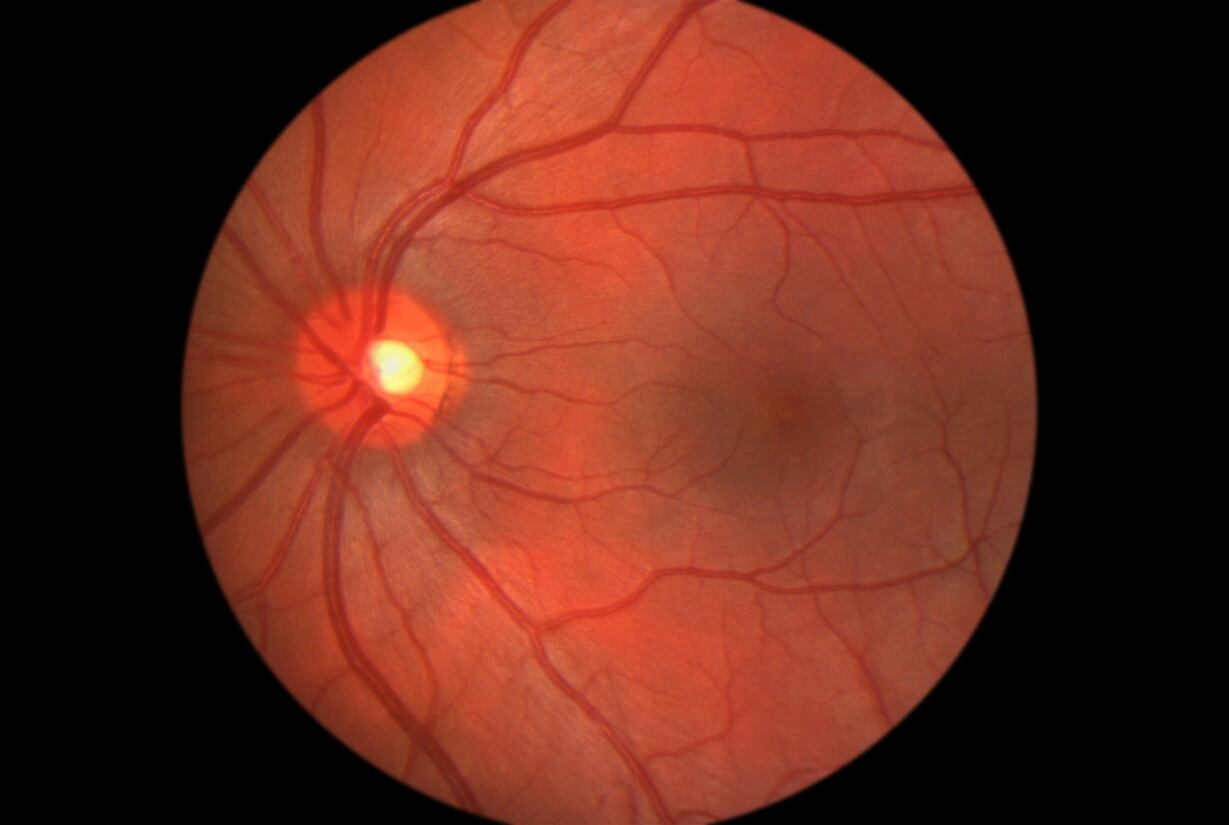The link between lutein and eye health was first reported in 1994 by Dr Johanna Seddon and her co-workers at Harvard University, who found a link between the intake of carotenoid-rich food, particularly dark green leafy vegetables like spinach, and a significant reduction in AMD (JAMA, Vol. 272, pp. 1413-1420). The burden of AMD falls on 25 to 30 million people worldwide, according to AMD Alliance International.
The macula is a yellow spot of about five millimeters diameter on the retina. The yellow color is due to the content of the carotenoids lutein and zeaxanthin, which we derive from the diet. These compounds are the only carotenoids capable of filtering the harmful blue light than can damage cells in the eye, the rods and the cones.
A thin macular pigment can allow the blue light through and destroy the cells. Maintaining high levels of the macular carotenoids, and therefore the macular pigment, is seen by many eye health experts as a valid approach to maintaining eye health and reducing the risk of AMD.
Inconsistent data to date?
Therefore, there is strong biological plausibility for the role of lutein and zeaxanthin in reducing the risk of AMD. However, according to the authors of the new paper in JAMA Ophthalmology, evidence from epidemiologic studies and clinical trials has been inconsistent.
Twenty years of data from 102,046 participants in the Nurses’ Health Study and the Health Professionals Follow-up Study indicated that people with the highest average plasma lutein/zeaxanthin levels had a 40% reduced risk of advanced AMD, compared with people with the lowest average levels.
The data also indicated an association between advanced AMD risk and some other carotenoids, including beta-cryptoxanthin, alpha-carotene, and beta-carotene. The highest average levels of these were associated with a 25% to 35% lower risk of advanced AMD compared with the lowest average levels.
Over the course of their study follow-up, the researchers confirmed 1,361 cases of intermediate AMD and 1,118 cases of advanced AMD. However, there were no associations found between carotenoid levels and the risk of intermediate AMD.

“Although the inverse association between lutein/zeaxanthin and advanced AMD was consistent with a number of previous studies, the observational nature of our study precludes the level of causal inference that could be derived from a randomized trial,” wrote the authors from the Harvard T. H. Chan School of Public Health, Brown University, and Harvard Medical School.
“Unfortunately, the primary analyses of the AREDS2 trial failed to prove a protective effect of lutein/zeaxanthin. However, when restricted to participants at the bottom 20% of dietary intake of lutein/ zeaxanthin, there was a 26% risk reduction. The subgroup result is consistent with the hypothesis that supplements may be more effective when the background dietary intake is below a biologically sufficient threshold.
“Given the unlikely occurrence of another well-designed large-scale randomized trial, long-running large prospective cohort studies like ours provide the best available evidence to further strengthen the evidence base for a protective role of lutein/zeaxanthin.”
“This study lends further support to the causal role of lutein/zeaxanthin in protecting against the development of advanced AMD. Because other carotenoids may also have a protective role, a public health strategy of increasing the consumption of a wide variety of fruits and vegetables rich in carotenoids could be most beneficial and is compatible with current dietary guidelines.”
Beyond the eye
As the science around lutein/zeaxanthin and eye health has developed and deepened, so has our understanding of related benefits, notably the potential role for the carotenoids in brain health.
Numerous studies with data from primates, children, middle-aged people, and the elderly now support the importance of lutein in brain health.

Much of the research has been led by Elizabeth Johnson, PhD, Scientist I in the Antioxidants Laboratory in the Jean Mayer USDA Human Nutrition Research Center on Aging at Tufts University, Prof John Nolan and Prof Stephen Beatty from the Macular Pigment Research Group at the Waterford Institute of Technology in Ireland, and Billy Hammond, PhD, Professor in the Behavioral and Brain Sciences Program, Department of Psychology at the University of Georgia.
(For a 2012 review on the subject by Dr Johnson in the American Journal of Clinical Nutrition, please click HERE)
Dr Johnson told NutraIngredients-USA in 2014 that data from pediatric brain tissue studies have shown that about 60% of the total carotenoids in the pediatric brain tissue is lutein, and yet NHANES data show that lutein is only about 12% of the carotenoids in the diets, so there is a preference for lutein in the brain, she noted (Vishwanathan et al. J Pediatr Gastroenterol Nutr. 2014).
'Interesting and encouraging'
Commenting independently, CheeYen Lau, Nutritionist at ExcelVite, which supplies the EVTene natural palm mixed carotene complex to the market, said: "Some carotenoids, particularly alpha- and beta-carotene are pro-vitamin A, are essential in preventing vitamin A deficiency / night blindness. This large and over a decade study confirms that alpha- and beta-carotene play an important role in supporting eye health (AMD), when taking together with lutein, zeaxanthin and beta-cryptoxanthin.
“It is very interesting and encouraging, especially for those who would like to formulate a natural multi-carotenoids product or to reformulate their current Lutein/ Zeaxanthin product to include Alpha- and Beta-Carotene. ExcelVite’s EVTene natural palm mixed carotene complex is the only true mixed carotene in the market that provides the highest level of alpha-carotene."
Source: JAMA Ophthalmology
Published online ahead of print. doi:10.1001/jamaophthalmol.2015.3590
“Intakes of Lutein, Zeaxanthin, and Other Carotenoids and Age-Related Macular Degeneration During 2 Decades of Prospective Follow-up”
Authors: J. Wu, E. Cho, W.C. Willett, S.M. Sastry, D.A. Schaumberg

